Diocletian, the Roman Emperor who created Tetrarchy, was amongst the worst Roman emperors. He ruled Roman Empire from 284 to 305 AD. His reign proved to be a horrific time due to his cruelty and inhuman acts.
Although he began ruling as a generous ruler during his primary days as an Emperor, he eventually began showing the other side. The Christians were tortured, and other citizens too were forced to follow the Pagan Religion.
He had done several good deeds, but they were overshadowed by the negative attitude he showed in his later days. Numerous interesting facts can be found in different legends regarding Diocletian.
Here is the list of the top 10 interesting facts about Dicoletian with some details.
10. Diocletian abdicated from the throne
Content
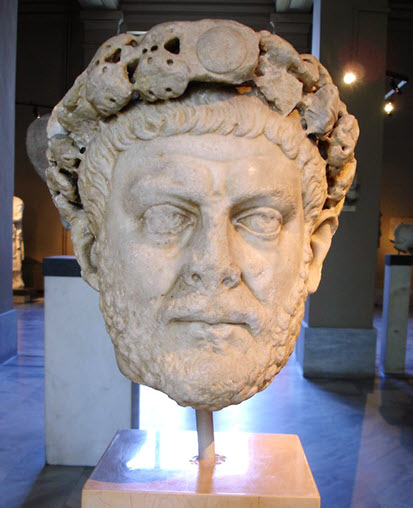
Diocletian was one of few Roman emperors who resigned from the throne voluntarily. After returning from the trip to Rome, the decision was taken where he fell ill seriously and retired.
The decision was taken in 305 AD, and since then, he began living his retired life in his huge palace-fortress in Spalatum. He would spend most of his time in the garden raising cabbages.
This huge walled complex featured reception rooms, a temple, and colonnaded streets. It also included a mausoleum, a bathhouse, and extended gardens.
Diocletian advised his co-emperor, Maximian, to retire from the power that let Constantius and Galerius be new emperors.
9. Diocletian hated Christians and prosecuted them mercilessly
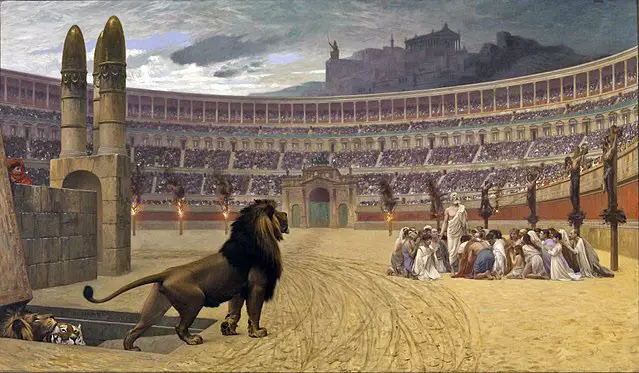
Diocletian wanted stability and the establishment of the traditional Roman gods completely. He wanted every Roman citizen to follow the religion he followed, the Pagan Religion.
However, the Christians would never agree to that. Diocletian could not take the rigidness of the Christians, and it came to his ego as he considered himself the living god. He wanted people to prostrate themselves before him and kiss his robe’s hem.
Diocletian introduced “Diocletianic” or “Great Persecution,” that limited Christians’ rights. Either Christians had to accept the religious practices of the Romans or had to die. Diocletian ordered his army to destroy all churches and Christian texts in 303 A.D.
This bloody persecution came to an end between 303 and 312. As a result, Diocletian failed in his mission to eradicate Christians. Like Nero, many Roman emperors tried to end Christianity. But it became the most preferred religion after 324 A.D.
8. Diocletian constructed the largest baths of Ancient Rome
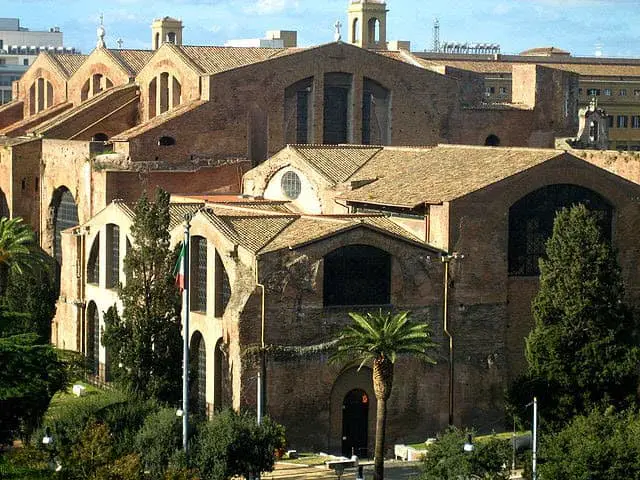
Diocletian had a co-emperor, Maximian, who equally shared the empire’s rule. But Diocletian always considered himself superior. Because of this attitude, he didn’t worry about imposing a heavy tax on Roman.
He spent taxpayer’s money on the infrastructure and military of the Roman Empire. In 297, Diocletian raised the Imperial tax, making it easier for the emperor to raise funds for national expenditure.
The fund raised was used to construct the Baths of Diocletian. It was one of the biggest projects for Diocletian at the time.
The Baths of Diocletian were constructed between 298 and 306 A.D. These Roman baths were the largest of their kind ever constructed in ancient Rome.
The complex had occupied 13 hectares (32 acres) which could accommodate up to 3,000 people at any time. Later, the facades of the ancient entertainment complex went under reconstruction.
The 16th-century church, Santa Maria Degli Angeli e dei Martiri, is an integrated form of this ancient structure. Michelangelo was a designer of this 16th-century church.
7. Diocletian issued the “Edict on Maximum Prices” in 301 A.D.

Empire’s finance always had an important consideration for Roman emperors. They heavily fund the army to strengthen national security and for the war.
Likewise, Diocletian needed more money to invest in the provincial reorganization and to expand military power. Diocletian, to raise funds, tried to improve the coinage with better quality pieces.
However, the experiment on coinage ended up lowering the metal quantity. When these coins lost intrinsic worth, he needed to issue “Edict on Coinage.”
On the other hand, the state was suffering inflation, and the mandate from Diocletian helped the state clear previous debts.
Diocletian needed to improve the financial state of the Empire, for which he ordered officers for a new census to determine how many inhabitants lived in the Empire.
The census was to be confirmed of how much land they owned and what that land could produce. Diocletian issued “Edict on Maximum Prices” in 301 A.D to raise funds for the Empire and end inflation.
He increased taxes and revised the collection process through this proclamation. Those who had a family business, compelled to continue whether they made a profit or loss.
6. Diocletian succeeded in establishing peace in the East in 299 A.D.
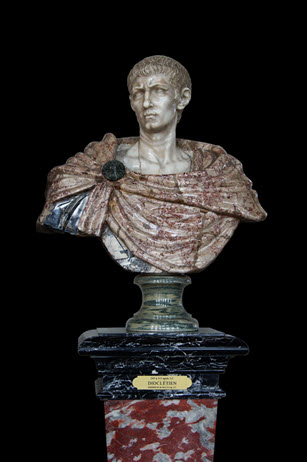
The Sassanid Empire of Persia was big trouble for the Roman Empire at the time. It was the final Empire until the Muslim Conquest existed in the 7th century.
Roman emperors fought several wars against the Empire of Persia. Diocletian also countered a similar warfare affair against Persia. He had to fight against Persia when Narseh became King of the Persians in 294.
Narseh was nice to the Romans until he declared war against the Roman Empire in the year 295. First, he invaded western Armenia and then Roman Mesopotamia, where he defeated Galerius.
Diocletian rebuked Galerius publicly. Galerius then took revenge, winning two battles against Narseh. He finally captured Narseh’s camp, his treasury, his harem, and his wife.
When Narseh got the news, he sent a peace proposal to the Roman emperor. He wanted to get his wife and children through peace negotiations.
The negotiation resulted in returning Armenia to the Romans. Romans then got control over the five satrapies between the Tigris and Armenia.
5. Diocletian had installed a bureaucratic government system in Roman Empire

Diocletian managed the tetrarchy that lasted longer through the bureaucratic government. He enlarged the Empire’s civil and military services.
He did it by creating provincial divisions and reorganized administrative centers widely. It was the most bureaucratic government in the history of the Empire.
New administrative centers emerged in Nicomedia, Mediolanum, Sirmium, and Trevorum. It helped Diocletian turn the Roman Empire into an effective autocracy.
This bureaucratic government also enabled Diocletian to make important decisions for the Empire.
The bureaucratic government continued doing well during Diocletian’s reign. But it collapsed when Maxentius and Constantine came into power. They were the sons of Maximian and Constantius, respectively.
4. Diocletian founded the tetrarchy to end the crisis of the third century
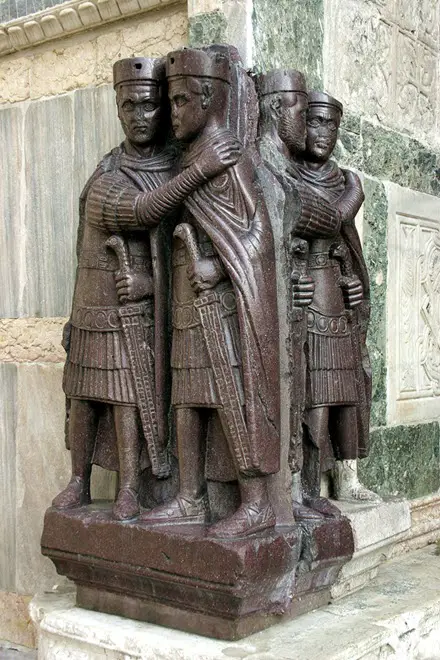
Roman Empire extended with numerous victories from numerous Emperors. It reached a point where a single emperor could not control the entire Empire.
Emperor Diocletian, to solve this issue, planned on dividing the Roman Empire into two parts. The Eastern Empire and the Western Empire would be ruled by two senior emperors ( the Augusti ) and two junior emperors ( the caesars).
Diocletian and Maximian then started searching for two Caesars for the East and the West, respectively. They needed two Caesars who could serve under each emperor.
Maximian appointed his praetorian commander Constantius as his Caesar. At the same time, Diocletian appointed Galerius as his Caesar. Both the newly appointed Caesars were known for their experience as leaders and for working under previous Emperors.
3. Diocletian split the Roman Empire into two for complete control

Diocletian already knew that the problem of reigning the Empire was immense size. He realized that a single emperor couldn’t rule the entire Empire.
Diocletian split the entire into two parts, East and West, and began searching for the co-Emperor to rule the other part of the Roman Empire.
He appointed Maximian, his son-in-law, as the Emperor for the Western Roman Empire. He began as the Caesar or the junior Emperor initially but was promoted to Augusti or the senior Emperor a year later.
He was honored with the name Marcus Aurelius Valerius. Diocletian was happy with his decision to appoint Maximian as he was able to deal with all the issues and problems of the Eastern Roman Empire.
2. Diocletian became emperor in his forties

Diocletian was a member of an elite corps in the Illyrian army and was not renowned until 283 AD. He began gaining fame after being appointed as the commander of the Protectores domestic.
It was an elite cavalry force directly attached to the Imperial household. Diocletian served as a part of “protectores domesticis,” the imperial bodyguard.
He continued this position under Carus’ successor and son, Numerian, and participated in a Persian campaign during which Emperor Carus died mysteriously.
Carinus and Numerian, the sons of Carus, became co-emperor. Carinus reigned in the West, and Numerian captured the East. But Numerian died mysteriously in the closed coach he traveled in. He was found dead when he returned from the Eastern border of the Roman Empire.
When Aper, the general, knew the news of Numerian’s death, he shared the news with the army. Then, the legion (group of the army) declared Diocletian emperor of the East. Later, Diocletian accepted it in 284 A.D. However, he hadn’t become the emperor of the entire Roman Empire yet.
Carinus was a weak and unpopular ruler in Roman Empire. He also mistreated the Senate and seduced his officers’ wives. And when the Battle of the Margus began, Carinus was killed by his own army. This incident let Diocletian control the entire Roman Empire.
1. Diocletian wasn’t born to the Roman Imperial family

Diocletian was one of the Roman emperors who were outsiders to an Imperial family. He was born on 22 December 244 A.D in the Roman province of Dalmatia.
Dalmatia was one of the ancient Roman cities of Salona, which was situated next to Split. Spilt was the second-largest city in the Dalmatia region.
Also, his birth had him named Diocles, belonging to a low-status family of Dalmatia. His struggle to be throned as the Emperor took him almost 40 years of his life. Also, anyone coming from outside of the Imperial family would hardly get a chance to be appointed as Emperor.
Conclusion
Every detail about Diocletian is full of importance. But the transition from unknown to the Roman emperor is quite fascinating. It is motivating that someone born in a lower-class family suddenly rises to be the Roman emperor. It is the most surprising part of the above for me. Do you agree with me, or have you found other facts also interesting? Write your thoughts in the comment below.
